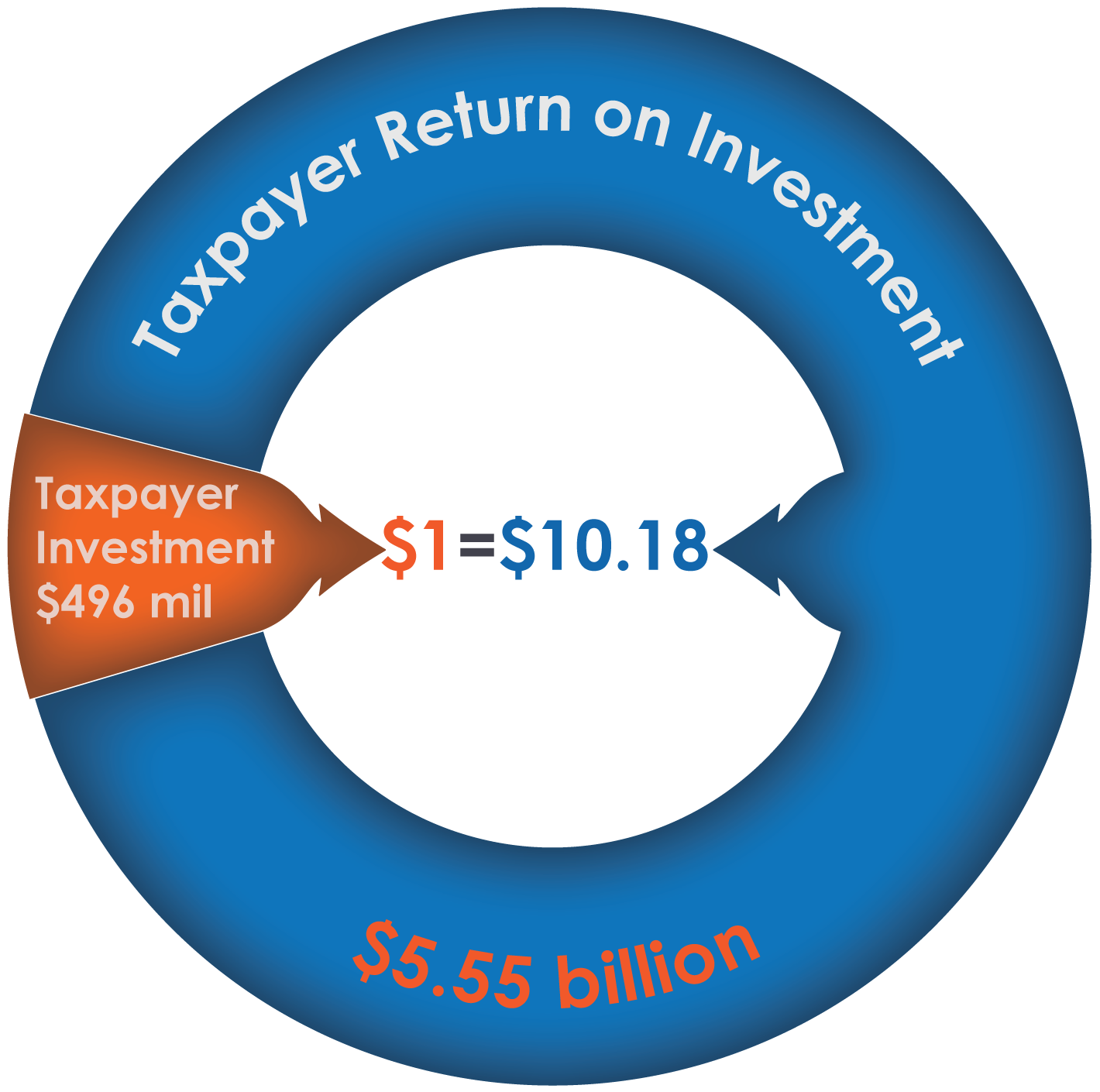HOME

When Florida taxpayers invest in public libraries what do they get in return?
The 2013 Taxpayer Return on Investment Study evaluates:
- The value that users place on public libraries.
- Taxpayers' return on investment.
- The economic impact of libraries in their communities.
FLORIDA PUBLIC LIBRARY QUICK FACTS
(For definition please hover over term)

| Return on Investment | $10.18 to $1 | Jobs Supported | 192,900 |
| Cost Per Job Created | $2,574 |
| Total Statewide Impact | $6.57 bil |
| Income Increase Per Dollar Spent | $28.42 |

| Number of Public Libraries | 555 |
| In-Person Library Visits | 82 mil |
| Items Checked Out | 126 mil |
| Number of Research Questions | 30.6 mil |
| Public Library Card Holders | 9.5 mil |
Why are Florida's 555 public libraries so important?
Public libraries:
- Support business, education and recreation.
- Promote lifelong learning.
- Excel in early childhood development.
- Provide public services and technology instruction.
What benefits do Florida public libraries offer Floridians?
Many people report they use libraries to:
- Research business practices.
- Evaluate goods and services.
- Seek tax information.
- Obtain information for their own needs, and the needs of their families.
- Enjoy the relaxing atmosphere, read for fun and attend public events.
METHODS
How were the Return on Investment and the Economic Benefits of Florida Public Libraries derived?
- Survey data was collected during the study.
- We performed an econometric simulation that took taxpayer funds away from public libraries, and distributed them to other government sectors. This simulation:
- Modeled what would happen if libraries in Florida disappeared.
- Forecasted impacts over a 32-year period.
- Demonstrated the economic role public libraries play in Florida's economy.
This study was commissioned by the Florida Department of State's Division of Library and Information Services, and is an update of two previous studies in 2004 and 2008.


